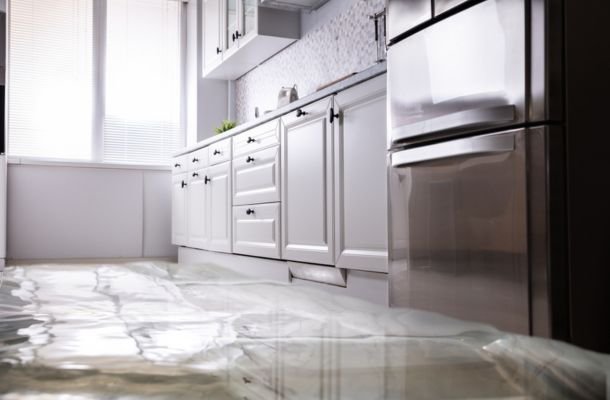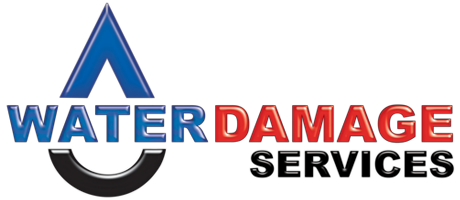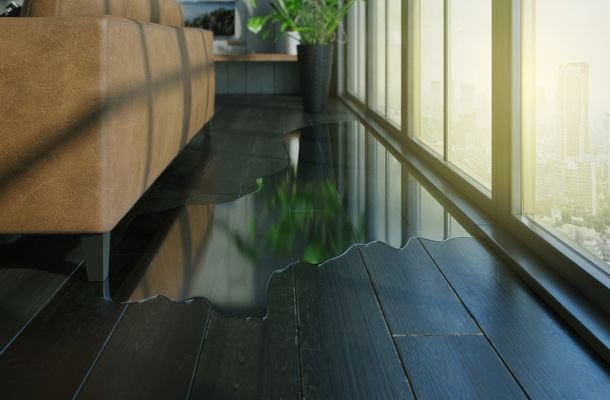Discovering water damage in your home can be overwhelming, but taking quick and decisive action is crucial to minimize the damage and prevent further issues. Here’s a step-by-step guide on what to do immediately after discovering water damage.

1. Ensure Safety First
Why It Matters
Water damage can create hazardous conditions, such as electrical risks and structural instability. Your safety and that of your family should be your top priority.
Steps to Take
- Turn Off the Power: If water is near electrical outlets, appliances, or the fuse box, immediately turn off the power to avoid the risk of electric shock. If it’s unsafe to do so, leave the home and contact an electrician.
- Avoid Contaminated Water: If the water damage is due to flooding or a sewer backup, the water may be contaminated. Wear protective gear like gloves, boots, and a mask if you must enter the area.
- Assess Structural Safety: If the water damage appears severe, check for signs of structural damage, such as sagging ceilings, buckling floors, or cracked walls. If the structure seems compromised, evacuate the area and contact professionals.
2. Stop the Source of Water
Why It Matters
Stopping the source of the water intrusion is critical to preventing further damage. Whether it’s a burst pipe, leaking roof, or overflowing appliance, addressing the source quickly will limit the extent of the water damage.
Steps to Take
- Shut Off Water Supply: If the water damage is due to a plumbing issue, turn off the main water supply to your home immediately. This will stop additional water from entering the area.
- Fix the Leak: If you can identify the source of the leak, take steps to fix it temporarily. For example, use a patch kit on a burst pipe or place a tarp over a leaking roof.
- Call a Professional: If you cannot stop the water flow yourself, contact a plumber or water damage restoration specialist immediately.
3. Document the Damage
Why It Matters
Documenting the water damage is essential for insurance claims and for keeping track of the extent of the damage. Detailed records will help you receive the proper compensation for repairs and restoration.
Steps to Take
- Take Photos and Videos: Before you begin any cleanup, take clear photos and videos of the affected areas, including close-ups of damaged belongings, walls, floors, and ceilings.
- Make a List of Damaged Items: Create a detailed list of all items that have been damaged, including furniture, electronics, clothing, and personal belongings. Note the approximate value of each item.
- Save Receipts: If you purchase any supplies or hire services for the cleanup, save all receipts as they may be reimbursable through your insurance claim.
4. Remove Excess Water
Why It Matters
Removing standing water as quickly as possible will help prevent further damage to your property and reduce the risk of mold growth. The longer water sits, the more damage it can cause.
Steps to Take
- Use a Wet/Dry Vacuum: For smaller amounts of water, a wet/dry vacuum can be effective in removing standing water. Be sure to empty the vacuum frequently.
- Mop and Towels: For small, localized areas of water damage, mopping up the water and using towels to soak up moisture can be helpful.
- Use Buckets for Large Amounts: If there’s a significant amount of standing water, use buckets to bail out the water, starting with the lowest point in the area and working your way up.
- Call a Professional: If there is significant flooding, it’s best to call a water damage restoration company with the proper equipment to remove large volumes of water.
5. Dry Out the Area
Why It Matters
Drying out the affected area quickly is crucial to preventing mold growth and further damage to your property. Mold can start growing within 24 to 48 hours, so immediate action is necessary.
Steps to Take
- Use Fans: Set up fans to circulate air and speed up the drying process. Place them strategically to cover as much of the affected area as possible.
- Use Dehumidifiers: Dehumidifiers help remove moisture from the air, which can accelerate the drying process and reduce the risk of mold growth.
- Open Windows and Doors: If the weather permits, open windows and doors to allow fresh air to circulate and help dry out the area.
- Remove Wet Carpets and Rugs: If carpets or rugs are soaked, remove them from the area to dry them out separately. This also allows the flooring underneath to dry more effectively.
6. Protect Your Belongings
Why It Matters
Moving your belongings to a safe, dry place helps prevent further damage and allows you to start the process of cleaning and restoring them.
Steps to Take
- Move Items to a Dry Area: Carefully move furniture, electronics, and other valuables to a dry area. If the items are too heavy or difficult to move, consider propping them up on blocks or placing aluminum foil under the legs to prevent further water damage.
- Remove Wet Items: Remove any items that are wet and start drying them out immediately. This includes clothing, books, and other personal belongings.
- Separate Items by Damage: Group items based on the extent of the damage—those that can be saved, those that need professional restoration, and those that must be discarded.
7. Contact Your Insurance Company
Why It Matters
Promptly contacting your insurance company ensures that your claim is processed as quickly as possible and helps you understand what is covered under your policy.
Steps to Take
- Report the Damage: Call your insurance company as soon as possible to report the water damage. Provide them with the documentation you’ve gathered, including photos, videos, and a list of damaged items.
- Understand Your Coverage: Ask your insurance representative to explain what is covered under your policy, what your deductible is, and what steps you need to take to process your claim.
- Schedule an Adjuster: Your insurance company may send an adjuster to assess the damage in person. Be sure to have your documentation ready for their visit.
8. Begin the Cleanup Process
Why It Matters
Starting the cleanup process as soon as possible helps mitigate the damage and begins the road to restoration. Proper cleaning is essential to remove any harmful contaminants and prevent mold growth.
Steps to Take
- Remove Contaminated Materials: If the water damage involves contaminated water (such as sewage), it’s important to remove affected materials, such as drywall, insulation, and carpeting, as they may not be salvageable.
- Clean and Disinfect: Thoroughly clean and disinfect all surfaces that came into contact with water, including floors, walls, and furniture. Use a mixture of water and bleach or a commercial disinfectant to kill bacteria and prevent mold.
- Dry Everything Completely: Ensure that all cleaned areas and items are completely dry before considering the area restored. This may take several days, depending on the extent of the damage.

9. Prevent Future Water Damage
Why It Matters
After addressing the immediate damage, taking steps to prevent future incidents can save you time, money, and stress in the long run.
Steps to Take
- Inspect Your Home Regularly: Conduct regular inspections of your home’s plumbing, roof, and foundation to identify potential issues before they become major problems.
- Install Water Sensors: Consider installing water sensors in vulnerable areas, such as the basement or near appliances, to alert you to leaks or flooding.
- Maintain Gutters and Downspouts: Keep gutters and downspouts clean and in good repair to prevent water from pooling around your home’s foundation.
- Consider a Sump Pump: If your home is prone to flooding, installing a sump pump can help remove water from your basement or crawl space before it causes damage.
Conclusion
Discovering water damage can be a stressful and daunting experience, but taking immediate action can minimize the damage and prevent further complications. By following these steps, you can protect your home, save your belongings, and ensure a smoother recovery process. Remember, when in doubt, don’t hesitate to call in professionals who can provide expert assistance in restoring your home to its pre-damage condition.


